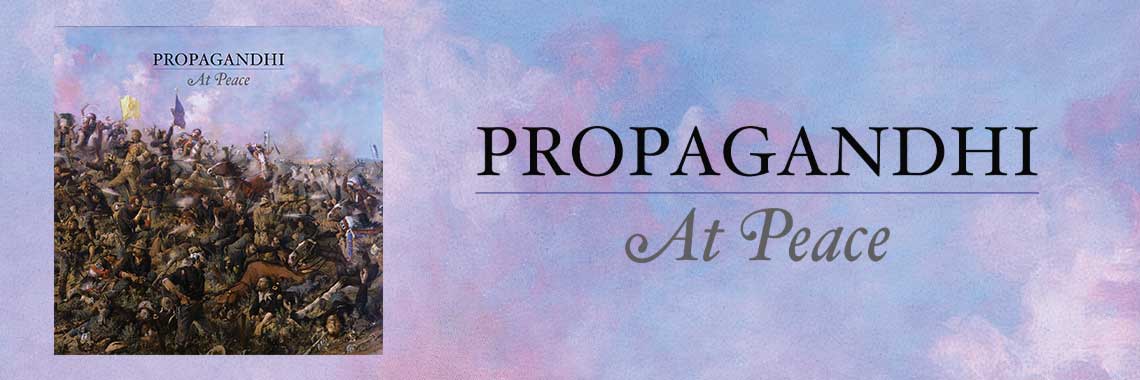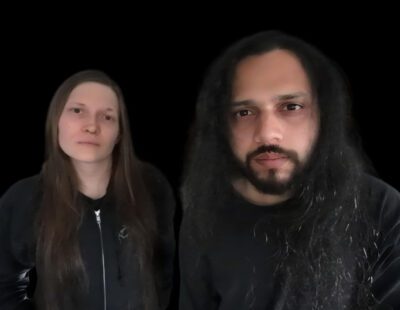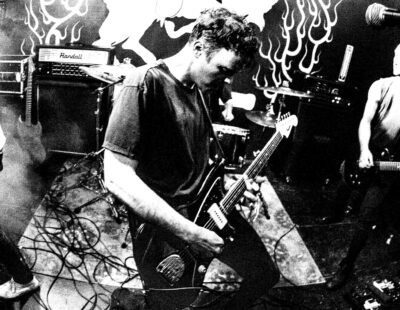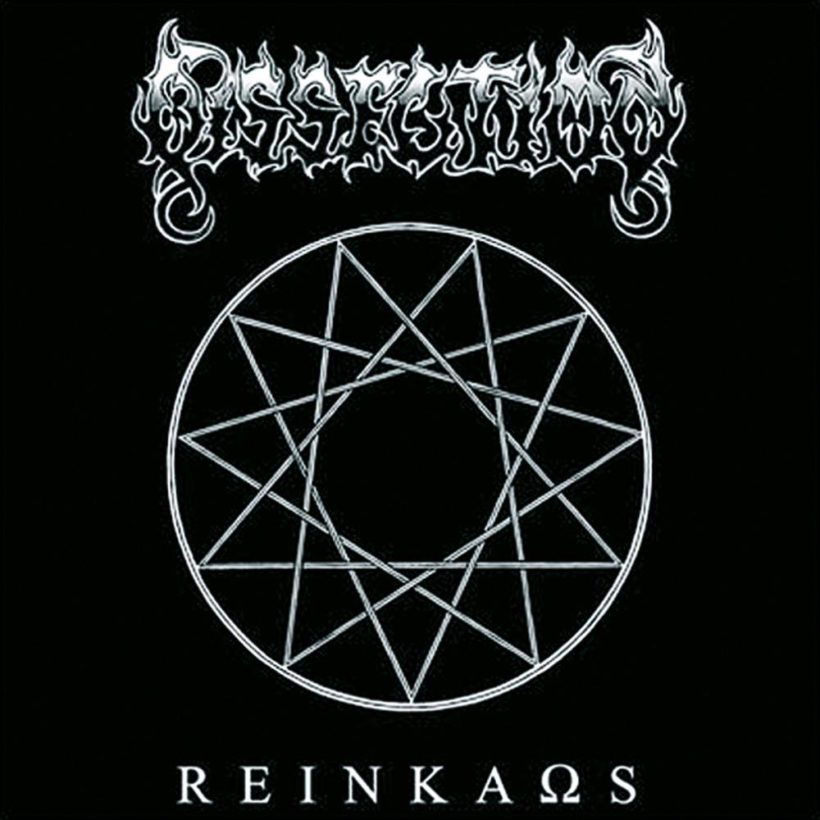
Almost every band has that album: you know, the critically and/or commercially reviled dud in an otherwise passable-to-radical back catalog. Well, every Wednesday morning, a Decibel staffer or special guest will take to the Deciblog to bitch and moan at length as to why everybody’s full of shit and said dud is, in fact, The Shit. Today, Chris Dick, er, dissects Dissection’s Reinkaos.
Defending a critically panned and fan-reviled record is a daunting task. The odds are stacked against both band (in this case Dissection) and the reviewer (in this case me) from the start, no matter what accolades come forth convincing the inconvincible metal faithful that an album they felt misrepresented everything they’ve known to be true and right. Tough shit. Things change. People change. Music changes.
OK, we all know the events of Dissection’s rebirth. But here it goes. After serving seven years for accessory to the murder of Josef Ben Meddour, Dissection ringleader Jon Nödtveidt was released from prison. Many feel it was Nödtveidt’s time in prison that changed him—musically and personally. He had changed before Meddour’s murder and his time in prison, actually. I remember speaking to At the Gates’ Tomas Lindberg in late 1996—Dissection had toured with ATG and Morbid in support of Storm of the Light’s Bane—and Lindberg had confirmed that something inside Jon had changed. They were good friends at the time. Nödtveidt was still a friendly guy, but he was clearly of a different mindset. It probably will never be known when he joined the Misanthropic Luciferian Order (now known as Temple of the Black Light). This association, however, altered not just Nödtveidt’s life path, but ultimately the paths of then-members Johan Norman, Tobias Kellgren and Peter Palmdahl.
We’re not here to revisit or revise history. We’re here to defend Dissection comeback record Reinkaos. Largely panned by critics and booed by fans, Reinkaos, Dissection’s third and final album, wasn’t a continuation of Storm of the Light’s Bane. It was Dissection reborn. The roots were there (mostly hidden), but clearly during his imprisonment (1997 – 2004) Nödtveidt had been writing lyrics and songs without strong ties to the extreme music scene. He wasn’t part of the machine—writing, recording, touring—either. Reinkaos, as a result, had to be different. I think this part is the hardest for Dissection diehards to understand. Nödtveidt was coming from a new abyss, and I think the expectation was for Dissection to blow everyone away. Leviathan emerging from the depths, so to speak. Dissection didn’t blow everyone away. Dissection shocked the fragile shit out of everyone.
Reinkaos is a hard rock album. There, I said it. Nödtveidt was always clear in interviews of his early influences. He wasn’t brought up on Under the Sign of the Black Mark and Black Metal, you realize. Very few still trucking today were. Also, it should be no fucking surprise to any Dissection acolyte that Nödtveidt was musical. In fact, he hit you (yes, you!) over the head with his musicality on The Somberlain, Storm of the Light’s Bane, and the Where Dead Angels Lie EP. He did it again on Reinkaos. Just it was conspicuous.
To that end, Reinkaos, as much as it’s willfully ignored (see Obscura’s Steffen Kummerer claim it “never happened” in his recent guest blog), is very much Nödtveidt and very much Dissection. With a new lineup (guitarist Set Teitan and drummer Tomas Asklund), Dissection were, I feel, poised for greatness. Too bad Nödtveidt ended all possibilities with his suicide in 2006.
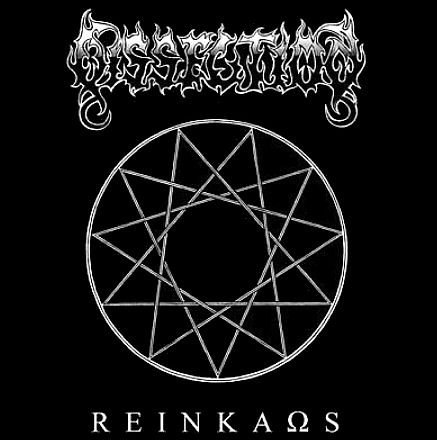
Reinkaos opens up with Nödtveidt’s proficient acoustic guitar set against a militaristic drum beat. The slow lead-in smoothly transitions into a tightly wound rhythmic pattern, which is the foundation for Nödtveidt’s soloing at the one-minute mark. The background bell chimes accentuate melody perfectly, while Asklund’s ride cymbal keeps time. It’s astutely structured melodically and rhythmically. In fact, the bass and drum interplay between 1:07 and 1:14 (yeah, seven fucking seconds!) is absolutely brilliant, but it comes in and goes out so quickly that it’s basically unnoticeable unless it’s a headphone session. “Nexion 218” is tried and true Dissection, but the majestic build-up doesn’t unfold into chaos and disorder as expected (hear the “At the Fathomless Depths” intro to “Night’s Blood” on Storm of the Light’s Bane). Quite the opposite, actually. As for what’s a “nexion” and what does the number “218” represent, it’s best to Google Temple of The Black Light and to know Nödtveidt was deeply involved in the Satanic/Left Hand Path organization. Regardless if it’s considered black magic mumbo jumbo, the title “Nexion 218” is the principle energy of Reinkaos and sets the tone for all music and lyrics to follow.
“Beyond the Horizon”
The expected blast after the “Zazas Zazas Nasatanada Zazas!” invocation in “Nexion 218” doesn’t happen. It’s a complete “What the Fuck?!” moment. Rather, Nödtveidt and crew rock hard—with double bass drumming. Here’s the thing, though: “Beyond the Horizon” isn’t that far removed from classic “Where Dead Angels Lie.” Structurally, the song is simple and effective, powerful and emotive. Nödtveidt was impressive in his ability to craft talismanic sonic symbols from which he could call out all kinds of bizarre mythological names and state his misanthropic philosophies. The song itself, I feel, is the weakest on Reinkaos, but it’s capable—when stacked against similar black/death hybrids of any time period—of quickly destroying the competition.
“Starless Aeon”
I don’t know for sure, but “Starless Aeon”, “Black Dragon” and “Dark Mother Divine” form a ritualistic triptych. Sure, there’s mention of dragons and other creator/destroyer (on “Maha Kali,” for example) types on Reinkaos, but these three tracks are intrinsically joined. The main on/off riff is fucking tight. It throbs to Asklund’s spartan drumming, while the bass serves as the driving force. The picked interlude/spoken word piece to solo (starting at 1:58) is trademark Gothenburg death, as is the brief solo flameout at 2:27. In short, it’s fucking great! What makes it so memorable, however, is the vocal/lyrical cadence. The match is near-perfect to the riff/drum timing. Who cares if doesn’t sound “evil” and makes the impressionable tap a foot or two? The body electric is the ultimate response to Dissection’s magic.
Arguably the centerpiece—or black diamond, if you will—to Reinkaos. My favorite Dissection tune next to “In the Cold Winds of Nowhere.” If “Beyond the Horizon” had vestiges of “Where Dead Angels Lie,” “Black Dragon” is a direct descendent. Although less classically-structured and more blues-based (Dimebag’s signature swells, anyone?) than anything in Dissection’s past, “Black Dragon” rules. The invocation of Tohu, Tehom, Theli, Than, Leviathan, Tanin’Iver and Taninsam position the track as a ritualistic device to all sorts of Left Hand Path madness. It’s almost as if Nödtveidt wrote this line first before a single “Black Dragon” riff. Again, the core of “Black Dragon” is hard rock—Nödtveidt’s signature rasp and lyrical darkness are the only constants from Dissection’s past—which works perfectly within the context of the skintight rhythms, counterpoint and flashy solos (3:32 – 3:39). Really, I’m not sure what’s not to like or be impressed with here. OK, there are no blasts or windswept melodies (“Soulreaper,” for example), but “Black Dragon” as a composition, is stronger than just about any complete song on Storm of the Light’s Bane.
“Dark Mother Divine”
Rocking of blackened cock continues on part III. The on/off riffs return, and so too do the subtle bass/drum change-ups, which are always a delight to find in the soundscape (look for them!). Probably Reinkaos’ most barebones track, “Dark Mother Divine” thrives on the song’s bridge-passage. I don’t know of a single band on the planet of Dissection’s caliber and origin that writes more potent bridge-passages. Nödtveidt was a fucking master. The solo, starting with a divebomb at 3:04 and transitioning into a blend of orgasmic notes, is similarly adept. Although I have to say the breakdown at 3:49 recalls, at least in tone and tempo, some of Hypocrisy’s duller gallops. It’s really just a set-up for Nödtveidt and Teitan to trade licks at 4:17, with the two linking up twin-style at 4:29.
“Xeper-I-Set”
As the most intense track on Reinkaos, “Xeper-I-Set” is the closest relative to Storm of the Light’s Bane. It’s faster and more forthright compositionally, which may please the old guard, but Dissection also have ho-hum on-album moments. Short in duration, but filled to the brim with adoration for Setian ways, if there’s one song to skip, it’s “Xeper-I-Set.” I hear lots of John Zwetsloot (as part of Cardinal Sin) here.
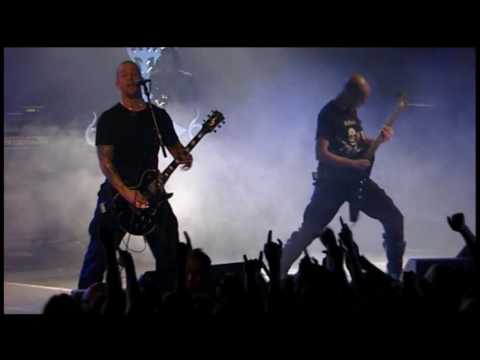
A folk-inspired acoustic guitar interlude that recalls In Flames (circa Lunar Strain). “Chaosophia,” another reference to the Temple of the Black Light, is quaint but merely serves as a launch pad for the primary riff in “God of Forbidden Light.”
“God of Forbidden Light”
Melodically, this is Jesper Strömblad (In Flames) all the way. The ascending/descending note choices swing with a kind of confidence heard on The Jester Race. The theme repeats endlessly throughout “God of Forbidden Light.” But as much as I think it’s deferential to classic In Flames, there’s an admirable quality to the arrangement. Nothing is wasted. Not even a transition. When most death-heavy bands would rather drag out the song length ’cause they’re afraid of writing anything under five minutes (not metal!), Dissection distilled things down to their simplest aspect and came out with a powerful expression.
“Reinkaos”
Again, In Flames spring to mind on this instrumental. The note choices are quite something, however. The progressions make sense and flow naturally. Yeah, they sound a bit flowery, and the solos sing (2:00 – 2:26) too confidently for most black pants-wearing dudes, but it’s hard to deny Dissection’s musicality.
“Internal Fire”
There are duds on every album. “Internal Fire” is common. Average. Rhythmically, the song sports some cool passages, and the solo section (2:00 – 2:21) is single-handedly the most un-Dissection thing ever. “Internal Fire” just lacks Reinkaos’ ritualistic spark.
Ah, “Maha Kali.” When I first heard “Maha Kali”, Dissection’s first back-from-the-grave/prison track, I was supremely disappointed. The old days (mid-’90s) were gone. Nödtveidt had lost a step while behind four walls. At the time, I felt it was clumsy and lacked impact. “Maha Kali” was re-envisioned for Reinkaos. Essentially, it’s the same tune from the Maha Kali single, but the warts (largely production and mix) have been planed off. What I do like about “Maha Kali” is the continual return to the main theme, almost like it’s a theme piece to a movie (not The Temple of Doom; I know what you’re thinking). The interaction between Nödtveidt and female vocalist Nyx 218 (here as the physical Kali) is a bit strange at first, but quickly makes sense once the lyrics fall into place. Then again, the only female vocal peer to Nyx 218 is Dan Swanö’s scream on “Black Horizons.” When I interviewed Nödtveidt in 1995, he claimed the girlish squeal was the result of Swanö getting a “dagger into [his] asshole”. Anyway, “Maha Kali” closes Reinkaos perfectly. It returns the mantra cadence and is in complete reverence to the Hindu goddess, as evidenced by the prefix “maha” (meaning “great”) before “kali.”
My feelings are that while others talked the talk, Dissection walked the walk. Reinkaos is Dissection. Dissection is Reinkaos. Un-rest in peace, Nödtveidt.
Tracklist:
1. Nexion 218
2. Beyond the Horizon
3. Starless Aeon
4. Black Dragon
5. Dark Mother Divine
6. Xeper-I-Set
7. Chaosophia
8. God of Forbidden Light
9. Reinkaos
10. Internal Fire
11. Maha Kali

